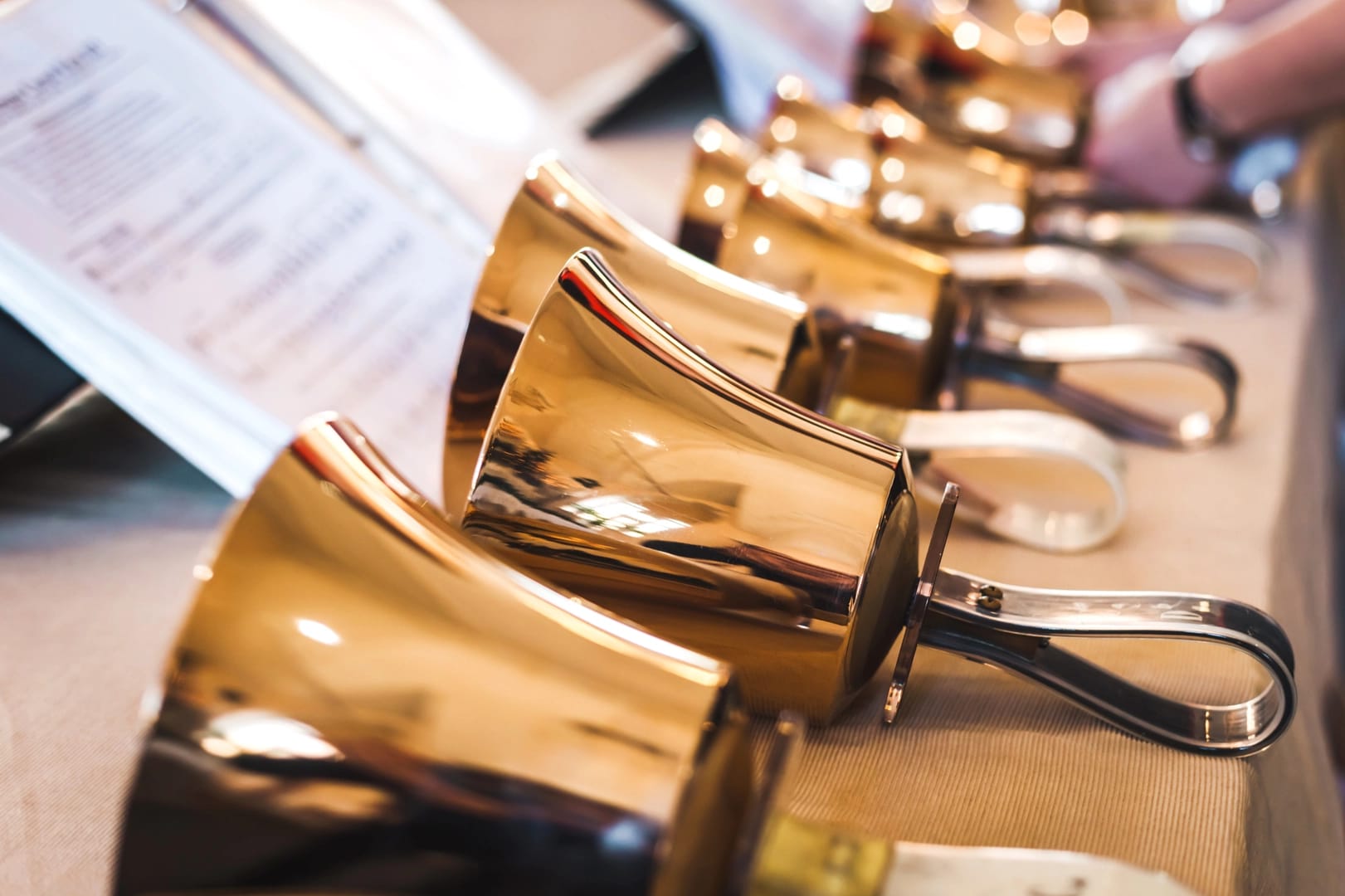
Alan Chapman has a lot to say about music, but can he say it in 60 seconds? That’s the Chapman Challenge. We ask a question and Alan has a minute to answer it.
Today’s question is from Joseph in Phoenix, Arizona. He writes, “I was watching a handbell choir on television and I was wondering how they split up the melody.”
Hit play below to listen to this week’s Chapman Challenge.
I had to start this one with a little handbell music.
First, let me mention that handbells weren’t originally meant to play tunes. They came about in connection with European bell towers. The ringers sounded those bells by pulling on ropes and creating patterns of notes rather than melodies. It’s called “change ringing.”
It seems that handbells were developed so ringers could practice their patterns away from the bell tower. Eventually, the handbells became a medium for melodies and special arrangements.
In a handbell ensemble, each ringer has anywhere from two to six bells and the music is simply divided among all the ringers, which means they better all be there for the rehearsals and performances.
Handbells came to America from England in the nineteenth century. And it may have been thanks to P.T. Barnum, who engaged a group of English ringers for an American tour, provided that they grow mustaches, wear colorful clothing and allow themselves to be billed as “Swiss bell ringers.”
Here’s a more intricate handbell arrangement:







